With the ever-growing popularity of kitted-out off-roaders straight from the showroom, car manufacturers are busy capitalising on the fact that many people prefer the convenience of buying a tourer that is already fitted with aftermarket equipment from the car yard, over buying a vehicle and then sourcing their own aftermarket equipment.
The Everest BaseCamp is one of those.
There are only 450 of these limited edition “family adventure” variants available, so if you’re keen for one you might want to get in fast.
But do these touring add-ons make the Basecamp worth the money? Or should you buy an Everest and source your own aftermarket gear?
Read on.
Ford Everest 2021: Basecamp
| Engine Type | Diesel Turbo 5, 3.2L |
|---|---|
| Fuel Type | Diesel |
| Fuel Efficiency | 8.5L/100km (combined) |
| Seating | 7 |
| Price From | $41,690 - $49,060 |
| Safety Rating |
|
Does it represent good value for the price? What features does it come with?
The 4WD-only BaseCamp is based on the mid-spec Trend variant, and is available with one of two diesel engines: a 143kW/470Nm 3.2-litre single-turbo five-cylinder ($63,090 plus on-road costs) or a 157kW/500Nm 2.0-litre twin-turbo four-cylinder ($64,590, plus on-road costs).
Our test vehicle had the 3.2-litre and a six-speed torque-converter automatic transmission.

The Trend’s standard features list includes Ford’s SYNC 3 multimedia system with Apple CarPlay and Android Auto, an 8.0-inch full-colour touchscreen and 10-speaker audio system, leather-accented seat trim, an eight-way power driver's seat and a leather-trimmed gear shifter, keyless entry and push-button start, reversing camera, rear parking sensors, and dual-zone climate control, 18-inch alloy wheels, hands-free power tailgate and more.
The Trend has AEB with pedestrian detection, lane departure warning, lane keep aid, traffic sign recognition, hill descent control, and more.

The BaseCamp edition comes standard with adventure-ready extras beyond Trend spec, such as a 76mm black nudge bar, LED light bar, a snorkel, and a Rhino Rack roof-top storage platform and a Rhino Rack Sunseeker awning. It also has distinctive ‘BaseCamp’ decals.
It costs $2200 more than a Trend but, Ford reckons, the add-ons are worth $6000.
Colours for the Ford Everest Basecamp include Arctic White and True Red (no additional cost), or additional-cost colours such as Alabaster White, Aluminium, Deep Crystal Blue, Diffused Silver, Meteor Grey, Shadow Black, and Sunset.
Is there anything interesting about its design?
The Everest is a good-looking unit as standard and the BaseCamp elements simply add to its low-key appeal.

The BaseCamp decals are subtle, rather than being clunky like, for example, those on the FX4 Max.
Short of having the ‘in your face’ styling of those in the range with ‘FORD’ in big block letters on the grille, the Everest retains plenty of presence.

What are the key stats for the engine and transmission?
A 3.2-litre five-cylinder turbo-diesel engine – producing 143kW at 3000rpm and 470Nm at 1750-2500rpm – powered our test vehicle. And that engine is matched to a six-speed automatic transmission. This is an impressive pairing.
The 2.0-litre twin-turbo four-cylinder diesel engine actually generates more power and torque than the bigger engine – 157kW and 500Nm – but the 3.2-litre is nice and smooth and never seems to lack any punch. I’ve towed and off-roaded with Everests of both engine variants and they’ve all been comfortable with highway cruising and heavy-duty work (including towing almost three tonnes and tackling low-range 4WDing).

The Trend has full-time 4WD with low-range gearing (a push-button ‘4x4 Low') and an electronic diff lock on the rear, as well as a dial-operated Terrain Management System which includes four driving modes (Normal, Grass/Gravel/Snow, Sand and Rock).
How practical is the space inside?
If you’re familiar with an Everest cabin you know what to expect: a neat comfortable space, with solid build quality and nice fit and finish. Though it feels a tad aged, the Everest has a pleasant cabin in which to spend your time, including on long-distance road trips and/or during low-speed low-range 4WD expeditions.

The interior is spacious and functional with easy-to-read instrument displays and the clear Sync3 screen, and life-friendly hard-plastic surfaces and comfort-friendly soft-touch areas.
The Ford Everest Basecamp has seven seats: driver, front passenger, and then a 60:40 split-fold seat back second row, and a 50:50 split-fold seat back third row. The second- and third-row seats can be manually deployed or stowed away.
The driver's seat is six-way power adjustable, and the front passenger seat is four-way manually adjustable.
The Trend has five child-seat anchor points, including two ISOFIX anchors in the second row.

Upfront you have access to multimedia and steering-wheel-mounted controls, two 12-volt sockets and two USB ports, as well as storage spaces including glovebox, two cup holders and a substantial bin between driver and front passenger, and bottle holders in each door.
Second-row passengers get a pair of pop-out cupholders in the arm-rest, and can control their own aircon temp and fan speed, as well as open or close air vents, and use a 230-volt or 12-volt socket from their seat.

Boot space in this seven-seat version of the Everest is a claimed 249 litres (VDA) with all seats up and in use; 876L with the third-row seats down; and 1796L with the second row down.

What's it like as a daily driver?
The BaseCamp is 4903mm long (with a 2850mm wheelbase), 2180mm wide (1869mm with the wing mirrors tucked in), 1837mm high, and has a listed kerb weight of 2437kg.
It is a substantial size, but the Everest always feels quite nimble in different scenarios, largely due to its precise and well-weighted steering.

I’m a fan of the Everest’s 2.0-litre engine, but the 3.2-litre in this BaseCamp makes a bit more sense to me if you’re planning to take on long-term towing and hard-core 4WDing duties. Both provide a smooth driving experience and both engines have proven themselves time and time again as punchy units capable of delivering smooth and sustained power and torque at low and high speeds.
NVH (noise, vibration, harshness) levels are well under control in the BaseCamp with nothing much noticeable inside the cabin other than some low-level wind-rush around the wing mirrors and a welcome engine growl every now and again. The BaseCamp’s Rhino Rack roof-top storage platform or Rhino Rack Sunseeker awning don’t seem to generate as much discernible noise as you might expect, but then again maybe I had the ‘Best of Abba’ turned up way too loud.

The suspension set-up – independent front (wishbones) and a five-link solid-axle rear end (Watt’s linkage), with coil springs all-round – helps to produce very smooth ride and handling with a sure-footed predictability about it all.
This Everest rides on Bridgestone Dueler H/T 684II (265/60 R18 110T) tyres, which go some of the way to contributing to a settled on-road presence, whether on the blacktop or a dirt track. It has 18-inch alloy wheels and a 17-inch steel spare.
What's it like for touring?
The Trend on which the BaseCamp is based has a full-time 4WD system with push-button-operated low-range gearing (‘4X4 Low’) and an electronic rear diff lock, as well as Ford’s Terrain Management System, which has Normal, Grass/Gravel/Snow, Sand and Rock modes, and which are selectable via a dial near the shifter.
It has 227mm ground clearance and a listed maximum wading depth of 800mm. Off-road angles are 29.5 (approach), 25 (departure) and 21.5 (ramp breakover).

As mentioned, I’ve towed and off-roaded with Everests of both engine variants and they’ve all handled load-hauling duties with general ease, and tackled 4WDing that’s hard-core for showroom-standard off-roaders without any fuss.
This time was no different. With tyre pressures dropped to 20 psi (pounds per square inch) and Sand mode selected for a few kilometres of firm sand in coastal bushland, the BaseCamp powered through, no worries at all.
There is ample low-rpm torque and, in terms of low-speed driver-assist tech, off-road traction control and hill descent control are low-key effective, and they came in very handy during a few sections of steep rock-crawling in the rain.
The only aspects that may be considered weaknesses in the Everest’s off-road armoury are its road-biased tyres (as standard), an underslung spare tyre, and pronounced side steps, which may cop a scrubbing through deeper ruts and over sharper terrain.

How about storage space? Boot space in this seven-seat version of the Everest is a claimed 249 litres (VDA) with all seats up and in use; 876L with the third-row seats down; and 1796L with the second row down.
Note: the Rhino Rack Sunseeker awning is easy enough to set up and pack away but, as with most vehicle-mounted, camper-trailer or caravan awnings, it’s a two-person job, just so it’s an easier process and be on the safe side.
The 3.2-litre Trend has a towing capacity of 750kg (unbraked), and 3000kg (braked).
It has a payload of 663kg, a GVM (gross vehicle mass) of 3100kg and a 5900kg (gross combined mass, including braked trailer). It has trailer sway control as standard.

How much fuel does it consume?
The 3.2-litre Trend has a claimed fuel consumption of 8.5L/100km on a combined cycle.
Actual fuel consumption on this test was 10.8L/100km.
It has a 80-litre fuel tank.

Warranty & Safety Rating
What safety equipment is fitted? What safety rating?
The Everest range has a five-star ANCAP rating as a result of testing conducted in 2015.
Safety gear includes seven airbags, AEB with pedestrian protection, adaptive cruise control with forward collision warning, lane-departure warning, lane-keeping aid, traffic sign recognition, rear view camera, parking sensors, hill descent control, hill launch assist and more.

It has five child-seat anchor points and two ISOFIX anchors in the second row.
What does it cost to own? What warranty is offered?
Any Everest purchased after May 1 2018 is covered by a five-year, unlimited kilometre warranty.
Service intervals are set at every 15,000km/12 months.
Ford states that customers will pay $299 for items listed in a A or B standard scheduled service for up to four years or up to 60,000km, whichever comes first.
Verdict
The Everest in all variants is an impressive large SUV wagon – it's more than capable and comfortable – and the BaseCamp treatment simply adds to that appeal.
However, does it make sense to buy something like a BaseCamp, rather than kit-out your own Everest via the aftermarket? Well, yes it does, if convenience is your priority in this case. But, no, if you’d prefer to source your own aftermarket gear and customise your Everest to suit you and your particular needs.
As is the case with many of these accessorised vehicles marketed as “ready for adventure”, keen off-roaders may prefer to cherry-pick aftermarket accessories and custom-design their own vehicle, but for others the BaseCamp provides an attractive entry-point into the adventure travel lifestyle.
Pricing Guides










.jpg)
.jpg)












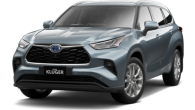



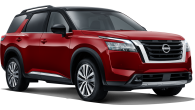








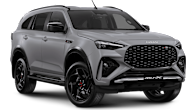



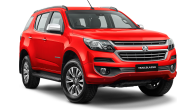


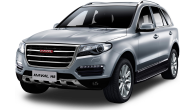




.png)

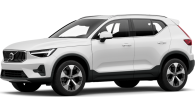






.png)


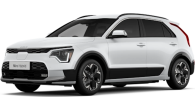

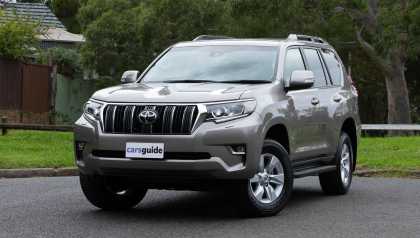



.jpg)
